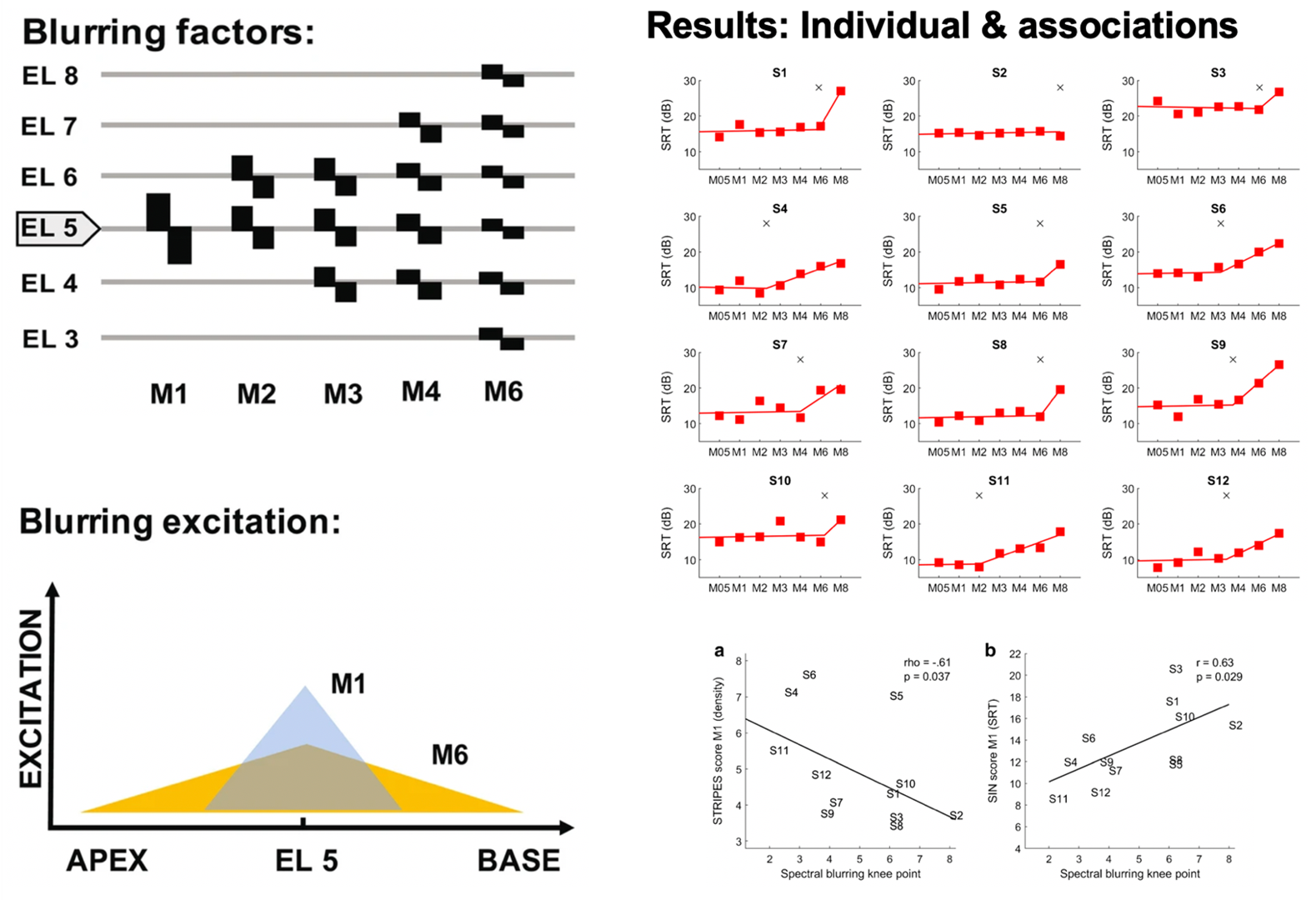Cochlear implants (CIs) are neuroprostheses that can provide good speech perception in quiet listening situations, but often fail to do so in environments with interfering sounds (e.g. in a restaurant or classroom). Importantly, there is a lot of variability between CI listeners, and it remains unclear why some people do really well with CIs, while others struggle a lot more. Previous research suggests that this is due to detrimental interaction effects between CI electrode channels, limiting their function to convey frequency-specific sound information, but evidence is still scarce.
We developed a method to directly investigate the effects of channel interaction in CI listeners. We used an experimental manipulation called spectral blurring to measure causal effects of channel interaction and found that it affected speech perception, but only when all channels were blurred simultaneously or when the most-apical (low-frequency) channels were blurred. Importantly, the amount of spectral blurring leading to changes in speech perception differed between individuals and was associated with their listening profile, indicating that channel interaction directly explains some of the variability between CI listeners.
This research provides insights into individual difficulties and differences between listeners. Further, the idea behind spectral blurring to assess causality rather than correlation can be used to disentangle the contributions of CI-, cognitive- and language-related causes. This could in future be used to develop tailored interventions for individual listeners based on their requirements.
Citations
GOEHRING, T., Arenberg, J. G., & CARLYON, R. P. (2020). Using spectral blurring to assess effects of channel interaction on speech-in-noise perception with cochlear implants. Journal of the Association for Research in Otolaryngology, 21, 353-371.
GOEHRING, T., ARCHER-BOYD, A. W., Arenberg, J. G., & CARLYON, R. P. (2021). The effect of increased channel interaction on speech perception with cochlear implants. Scientific Reports, 11(1), 1-9.

 MRC Cognition and Brain Sciences Unit
MRC Cognition and Brain Sciences Unit


